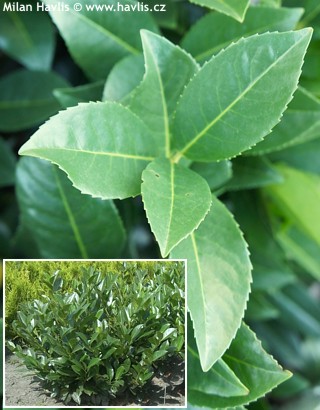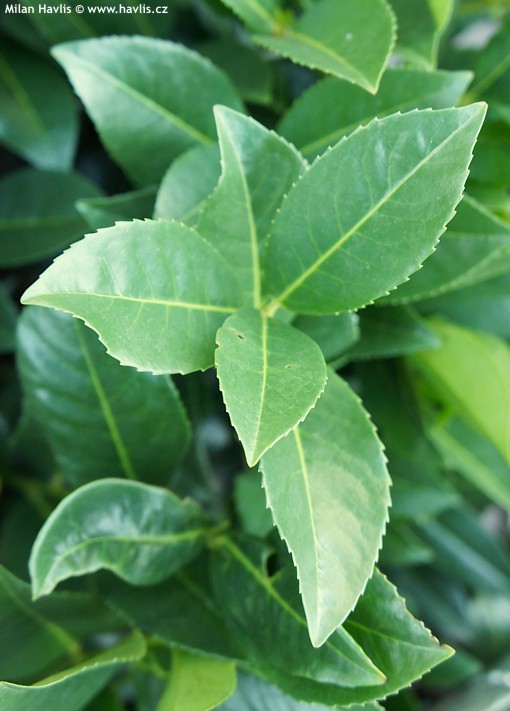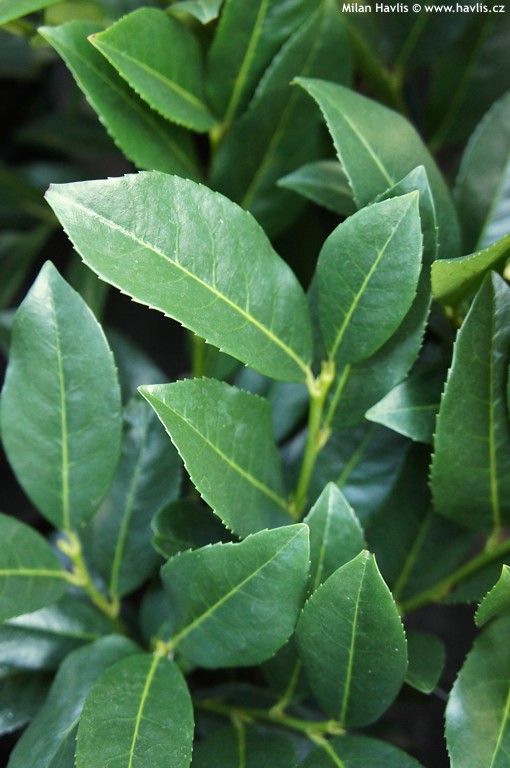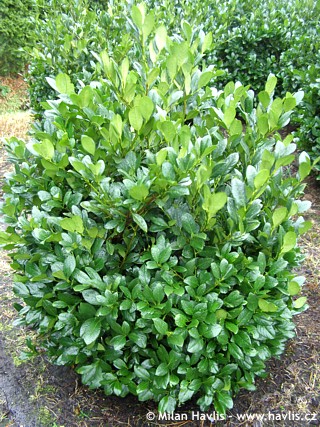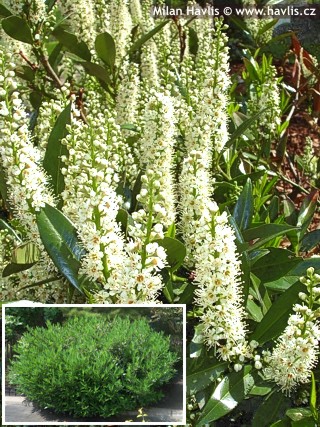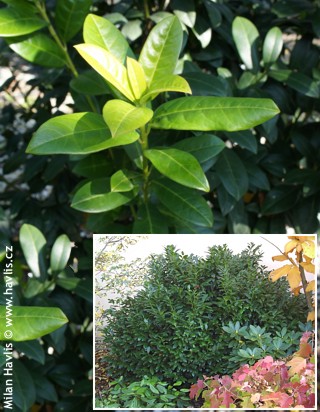Prunus laurocerasus 'PIRANHA'® cherry laurel
Some plants have a distinct tell as to who were their ancestors. Having checked the foliage of this cherry laurel it is clear that one of the parents for it must have been the South American predator fish piranha. Of course we are pulling your leg not expecting you to believe us but truly, the breeder must have been quite witty himself calling his achievement exactly the same: Piranha® cherry laurel.
Piranha® has distinctly serrated leaf margins that resemble piranha teeth, but these teeth are just a decoration – soft and harmless. The leaves are evergreen, leathery, 5-9 cm long, broadly elliptic, deep green, and glossy. In May appear erect racemes of small, creamy white, fragrant flowers that are followed by purple-black, spherical fruit (berries), loved by birds, not edible for humans, but not poisonous. Only the seeds from green, unripe fruit may cause some problems. Unless you want to keep the fruit for birds in your garden, you can prune the plant right after flowering to encourage new and clean growths without fruit.
Piranha® belongs to the new generation of cherry laurels, cultivated and reproduced to the exclusion of some older varieties, because it has better resistance to common laurel diseases and is hardier. This variety survived, without any damage, very bad conditions of late winter and early spring of 2012 (extremely low temperatures in countries with rather temperate climate, combined with dry soil and lack of snow insulation). It makes it a perfect choice for locations with harsh frost and long lasting winter.
Laurels need slightly deep and fertile, preferably acidic, moist soil, and extra watering in frost-free periods in winter as prevention from drying out before the ground gets frozen. They will thrive in full sun or part shade, and will also tolerate being grown in full shade but may loose their shape. Laurels seldom suffers from chlorosis (leaves turning yellow owing to lack of iron in the soil) but when it happens use a special liquid soil pH balancer to keep it acidic or add plenty of iron-rich fertilizer. Once established they run their roots deep enough to absorb nutrients from lower, usually clay ground. Experienced hardiness is down to -25°C (USDA zone 6) and is expected to go even lower.
Last update 12-02-2013

































